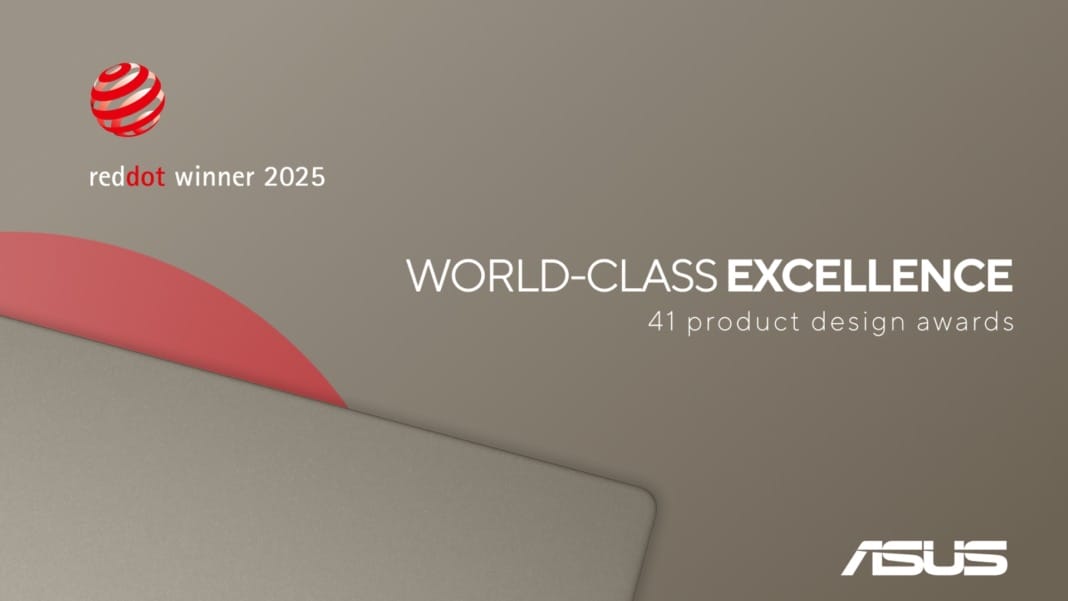ASUS has won 41 accolades in the Red Dot Design Awards for Product Design 2025, reaffirming the company’s commitment to user-centric innovation and design excellence. This year’s awards reflect ASUS’s strong showing across a broad spectrum of categories, from high-performance laptops and smartphones to accessories and home entertainment products.
The company’s success highlights the strength of its design philosophy, which blends functionality, aesthetics, and sustainability. Winning entries came from five main categories: Computer and Information Technology (35 awards), Mobile Phones, Tablets and Wearables (3), Luggage and Bags (1), TV and Home Entertainment (1), and Communication Technology (1).
A showcase of form, function, and innovation
The awarded products span a wide variety of use cases and customer segments, underlining the brand’s versatility. Among the notable winners are the ASUS Zenbook S 14/16, the ROG Swift OLED display series, and the Zenfone 12 Ultra smartphone. The ProArt Display OLED and ASUS NUC mini PCs were also recognised, alongside gaming gear such as the ROG Phone 9 Pro and ROG Azoth Extreme.
ASUS’s commercial range also earned recognition, including the ExpertBook P5, P3, and B series, as well as the ExpertCenter AiO and Chromebook CX1. Even peripherals and components, such as the ProArt Z890-CREATOR motherboard and the ROG Astral RTX 50 series graphics cards, were among the winners.
According to ASUS, these wins highlight the company’s dedication to delivering thoughtfully crafted products with attention to quality and usability. The design of each product reflects the brand’s long-standing ethos of combining technology with human-centric thinking, consistent with its “In Search of Incredible” vision.
International jury highlights ASUS quality
The Red Dot Design Award has been one of the world’s most respected design competitions since 1955. For the 2025 edition, a panel of 43 international jurors from 21 countries reviewed entries from more than 60 nations. Products were judged on four design criteria: quality of function, seduction, use, and responsibility.
Each submission went through a detailed evaluation process that included hands-on testing and collective deliberation. The focus was not only on aesthetics, but also on innovation, ease of use, and environmental responsibility.





